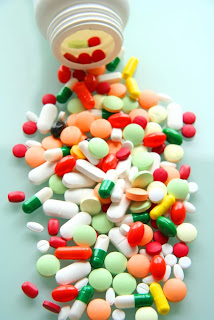Often times, people seem to engage in eating whatever they assume to be digestible without taking into consideration that they could have been endangering not only their health but even their lives.
Mixing dangerous drugs together with their favorite meal usually happens without them even realizing. Often times, they are unaware that harmful interactions can occur whenever such medications are combined with specific food since they are harmless when taken individually. What used to be a cure to the body has now turned into a poison. The combination of specific food and drug either cause efficacy reduction or toxic production.
Read on to know more.
1. Antibiotics
- As its name implies, antibiotics are given by your physicians in order to eliminate and kill bacteria from your system. They also help get rid of viruses and fungi. While taking the medication, it is a must for you to avoid alcohol consumption. Alcohol’s effect to our body causes reduced water retention due to evaporation from heat lose and diuresis. When combined with antibiotics, adverse effect can happen. Most common ones are headaches and stomach upsets. But the most worrisome reaction would be that of a metronidazole (flagl) and tinidazole (fasigyn) which can cause irregular heartbeats.
- Cipro (Ciprofloxacin) is a drug commonly used since it targets a wide range of bacterial infection. Unfortunately, it would be useless if taken with dairy products due to its calcium content. Calcium easily binds to Cipro causing a reduced effect. Refrain from taking dairy products such as cheese, yogurts or milk within 2 hours before and after taking the medication.
2. Antihypertensive
- These medications are designed to lower the complications of cardiovascular diseases caused by hypertension by lowering the blood pressure. Examples are the ACE inhibitors (ACEI) and calcium channel blockers (CCB). All of these drugs have the potential to interact with food.
o ACEI – these drugs prevent the conversion of angiotensin I to angiotensin II which is primarily a vasoconstrictor. An adverse effect on this is hyperkalemia since the sodium content in the circulation is decreased. In this relation, foods rich in potassium should be avoided so as to prevent the complications. Toxicity level is manifested by tingling sensations, nausea, dysrhythmias and fatigue.
o CCB – the calcium channels of our smooth muscles (vascular system) help in vasoconstriction and when blocked helps lower down blood pressure. When taken together with grapefruit and peppermint, it causes an added effect resulting in increased blood pressure drop to more than what is desired. Life-threatening effects of hypotension are likely to occur if not prevented.
3. Anticoagulants
- These medications are prescribed as blood thinners. Vitamin K facilitates the formation of blood clot and thus food rich in this component should be avoided. Examples rich in Vitamin K are spinach, asparagus, broccoli, lettuce and cabbage. On the other hand, you should avoid garlic, onion and vitamin E since it has an added effect to the drug leading to bleeding.
4. NSAIDs
- Nonsteroidal anti-inflammatory drugs or NSAIDS are drugs that are commonly taken as pain relievers or anti-inflammations. Normally, the enzyme cyclooxygenase (COX) helps in the production of prostaglandins. Prostaglandins help in the protection of stomach lining. NSAIDs block the COX enzyme causing a reduced production of prostaglandins. In this connection, alcohol and food rich in acid content should be avoided. It is also not advisable to take this medication with an empty stomach.
These are just few of the most common harmful food and drug interaction that should be avoided. The single best way to avoid such complications is to prevent administration of over the counter medications and consult a physician. It is also beneficial to read the labels first before taking the medication. This way, you prevent serious irreversible damages.
 Lastly, the authoritative parenting is also known as balanced parenting. While establishing rules and regulations, it also provides a nurturing environment for the child to develop. These parents are also attentive to the demands of their child and teach rather than punish if ever they become at fault. The child then develops a high sense of self-worth and independence.
Lastly, the authoritative parenting is also known as balanced parenting. While establishing rules and regulations, it also provides a nurturing environment for the child to develop. These parents are also attentive to the demands of their child and teach rather than punish if ever they become at fault. The child then develops a high sense of self-worth and independence.

